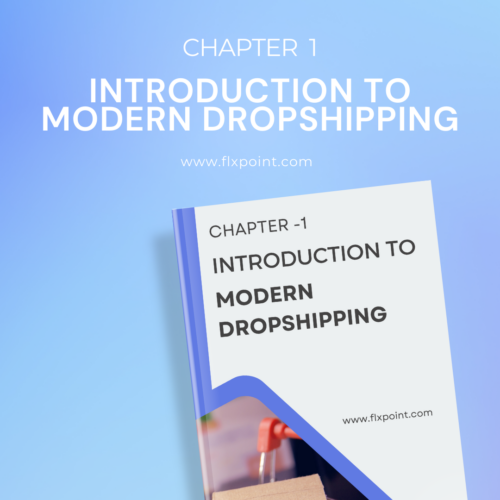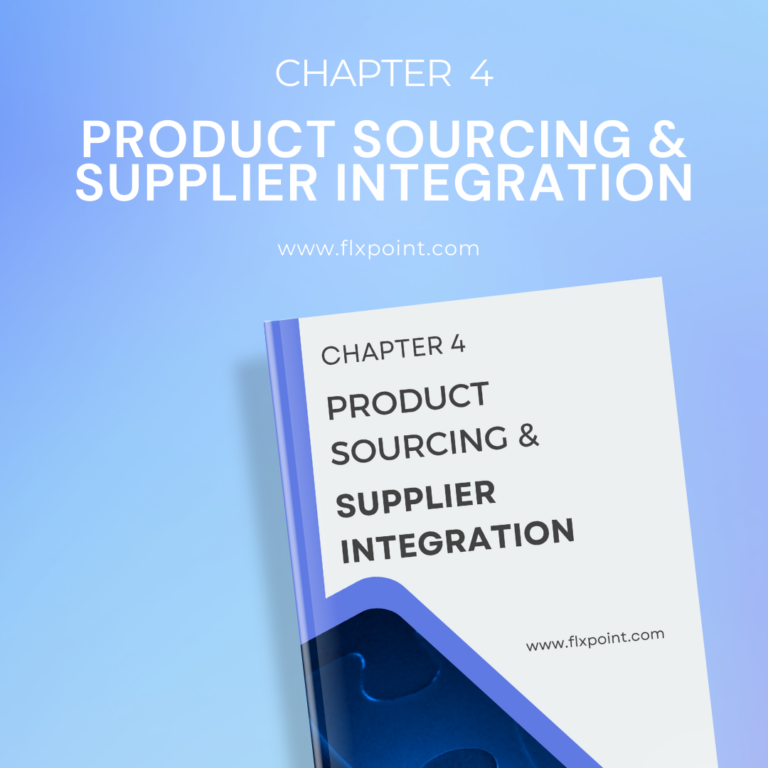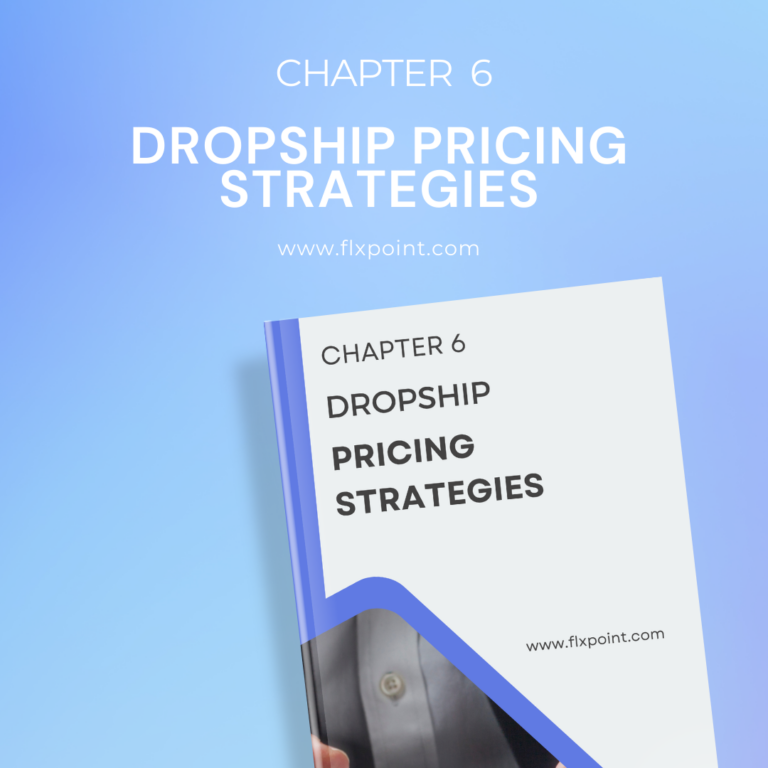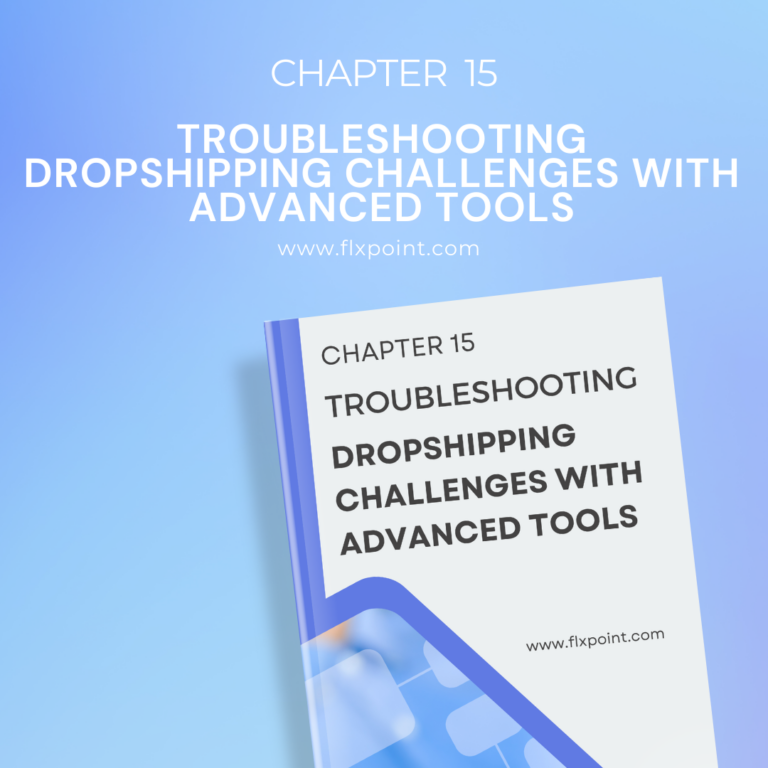Chapter 13 Managing Multi-Channel Sales and Integration
Master the art of multi-channel selling. Understand integration best practices, manage inventory seamlessly across platforms, and optimize your reach to boost sales

Introduction to Workflow Automation
Multi-channel sales means selling your products on many different platforms instead of just one. This helps businesses reach more customers and sell more products. Popular platforms for this include Shopify, Amazon, and Walmart, each with its own special feature and customers.
Using a multi-channel approach helps reduce reliance on one platform, creating a diversified revenue stream. By tapping into different marketplaces, businesses can maximize their visibility and cater to a wide range of customers. However, managing sales across multiple platforms can become complex, especially when it comes to inventory and order management.
This is where tools like Flxpoint channel integration come in. Flxpoint enables seamless management of inventory, orders, and data syncing across all platforms from one central dashboard. Leveraging multi-channel sales is key to staying competitive in the ever-evolving ecommerce landscape.
Importance of Selling Across Multiple Platforms
Benefits of Diversification
Increased Market Reach
Selling on multiple platforms like Amazon, Shopify, and Walmart can help your business reach more customers. These platforms have a lot of people who shop there regularly. By selling on them, your products can be seen by millions of potential buyers. This increased visibility can lead to more sales and higher revenue. Tools like Flxpoint channel can make managing your sales across different platforms easier. This way, you can manage your products, prices, and stock from one place. By selling on multiple platforms, you can reach a wider audience and increase your overall business presence.
Access to Different Customer Segments
- Different platforms attract varied customer demographics.
- Selling on multiple channels gives access to buyers with different preferences and shopping habits.
- Expanding across multiple platforms helps tap into niche markets that may be exclusive to certain platforms.
- Multi-channel sales allow you to adjust marketing strategies based on platform-specific customer data.
Risk Mitigation
Reducing Dependency on a Single Platform
It’s risky to rely on just one sales platform for your dropshipping business. If something goes wrong with that platform, like a technical problem or a change in rules, your sales could suffer. By selling on multiple platforms like Shopify, Amazon, and Walmart, you can protect your business from these risks. This also lets you reach more customers. Using tools like Flxpoint can help you manage all these platforms easily, making your business more flexible and able to handle unexpected problems on any one platform.
How to Maintain Consistent Revenue Streams
- Target Different Customer Segments – Selling on various platforms lets you reach customers who prefer specific marketplaces.
- Seasonal and Regional Flexibility – Platforms may perform differently depending on the season or location. Diversifying sales channels ensures you can capture demand from all angles.
- Avoiding Algorithm Changes – Marketplace algorithms can change, affecting visibility and sales. By spreading your products across platforms, you reduce the impact of any one change.
- Flxpoint’s Role – Using Flxpoint channel integration simplifies managing multiple platforms, ensuring smooth operations without missed sales opportunities.
Challenges of Managing Multi-Channel Sales
Complexity of Inventory Management
It’s hard to keep track of your products when you sell them on many different platforms like Shopify, Amazon, and Walmart. If you don’t manage it well, you might sell more products than you have, run out of stock, or miss out on sales. When you sell on multiple platforms, orders can come in at the same time. Without the right tools, it’s tough to keep track of how many products you have left. Manual updates can lead to mistakes, like one platform showing a product as in stock while another says it’s out. This can frustrate customers and hurt your sales.
A Flxpoint channel solution can help. It automatically updates your inventory levels across all platforms, making sure they’re always accurate. By reducing human error and automating updates, you can keep your inventory in check, avoid overselling, and provide a better shopping experience for your customers.
Order Fulfillment Difficulties
Managing order fulfillment across multiple platforms presents significant challenges. Each marketplace—like Shopify, Amazon, and Walmart—has its own rules, shipping policies, and tracking requirements. When selling across multiple channels, it becomes harder to keep track of orders, ensuring they are shipped on time and with the correct shipping method.
Inconsistent data across different sales platforms can lead to delays, missed shipments, or wrong product deliveries. For example, without real-time inventory updates, a product could be oversold, causing delays and negative customer experiences. Additionally, tracking orders from different channels can become confusing and overwhelming, as each platform may offer different tracking systems and status updates.
Flxpoint channel integration helps simplify multi-channel sales by automating inventory updates, syncing data, and providing a single dashboard for managing orders. This makes it easier to keep track of every step of the fulfillment process, reducing errors and improving customer satisfaction through efficient shipping and order tracking. By overcoming these order fulfillment challenges, businesses can maintain consistency and meet customer expectations across all platforms.
Automating Order Routing and Inventory Updates
Managing orders, stock levels, and fulfillment across platforms like Shopify, Amazon, and Walmart can be overwhelming. Without automation, businesses risk overselling, delayed orders, or lost revenue. Automating processes like order routing and inventory updates ensures smooth operations and reduces human error.
Benefits of Automating Processes in Dropshipping
- Efficiency Gains – Automation saves time by instantly routing orders to the right suppliers and updating inventory levels across all channels. This reduces manual tasks and streamlines operations.
- Error Reduction – By automating tasks like stock updates and order processing, you minimize errors like overselling or shipping delays, leading to a better customer experience.
- Real-Time Data Syncing – Automation tools like the Flxpoint channel sync your inventory in real time across multiple platforms. This helps prevent stockouts or missed sales opportunities.
- Cost Savings – Automation reduces labor costs and avoids financial losses from order mistakes or stock issues, making your business more profitable.
- Scalability – With automated processes, your business can grow and manage high volumes of orders and sales channels without extra manual effort.
Preventing Overselling and Missed Sales
Techniques for Effective Order Routing
Effective order routing is critical in preventing overselling and missed sales in multi-channel dropshipping. Some key techniques for optimizing this process are as follows:
- Real-Time Inventory Syncing – Ensure that inventory levels across all sales channels are synced in real time. This helps avoid selling out-of-stock products, which is a common issue in multi-channel sales.
- Automated Order Assignment – Automatically assign orders to the best supplier based on availability, shipping speed, and cost. This streamlines fulfillment and reduces manual errors.
- Multi-Warehouse Routing – If you work with multiple warehouses or suppliers, use software like Flxpoint channel integration to route orders efficiently. The system can split or consolidate orders based on location for faster delivery.
- Prioritize by Stock Availability – Route orders to suppliers or warehouses with the most stock available first. This reduces the risk of stockouts and ensures that the fastest-moving items are always in supply.
- Marketplace Integration – Connect your business to marketplaces like Amazon, Shopify, and Walmart to enable seamless order routing. Integration simplifies managing orders from multiple platforms.
- Set Backup Suppliers – Have secondary suppliers ready if your primary source runs out of stock. This prevents disruptions in order fulfillment.
Real-Time Inventory Updates
Real-time inventory updates are crucial in preventing overselling and missed sales, especially in multi-channel sales environments. By syncing inventory data across all platforms, businesses can avoid stockouts and ensure smooth operations.
Accurate Stock Levels Across Channels
- Sync inventory across all platforms such as Shopify, Amazon, and Walmart.
- Avoid overselling by ensuring all listings reflect current stock availability.
Marketplace Integration for Consistency
- Integrate with multiple sales channels to ensure stock levels are updated instantly.
- Flxpoint channel management makes it easy to connect various marketplaces for seamless updates.
Reduce Manual Errors
- Automation reduces the need for manual updates, minimizing the risk of errors.
- Real-time updates ensure orders are routed to suppliers based on current stock.
Customer Satisfaction
- Prevent missed sales opportunities by displaying accurate inventory.
- Avoid backorders or delays by ensuring product availability is reflected across all platforms.
Flxpoint – Streamlining Multi-Channel Management
Overview of Flxpoint’s Features
Flxpoint is designed to simplify multi-channel sales by providing advanced features that make managing various platforms easier. One of its core strengths lies in its integration capabilities. Flxpoint allows seamless connections with multiple marketplaces such as Amazon, Shopify, Walmart, and eBay, enabling businesses to sell across platforms without the hassle of managing each individually.
This marketplace integration ensures that product listings, stock levels, and pricing are automatically updated in real-time across all channels. This reduces the risk of overselling or missing out on sales opportunities. Flxpoint also synchronizes inventory from multiple suppliers, ensuring that all product data is accurate and up-to-date across every Flxpoint channel.
By integrating with a wide range of platforms, Flxpoint offers a centralized hub for managing orders, inventory, and fulfillment. This capability not only streamlines operations but also helps businesses scale effectively, allowing them to handle multi-channel sales with ease and efficiency.
Benefits of Using Flxpoint
Centralized Dashboard for Management
Flxpoint’s centralized dashboard makes it easy to manage sales across many different platforms. You can see all your sales, inventory, and order information in one place. This saves time and reduces mistakes.
Improved Efficiency in Order Processing
- Automated Order Routing – Flxpoint automates order routing to the appropriate fulfillment centers based on stock levels and shipping times.
- Real-Time Inventory Updates – Syncs inventory across all channels to prevent overselling and ensure accurate stock levels.
- Faster Fulfillment – Reduces order processing time, leading to quicker delivery to customers.
- Error Reduction – Minimizes manual entry, decreasing the chances of mistakes during order processing.
- Integrated Marketplace Solutions – Seamless integration with various marketplaces allows for streamlined operations and improved workflow.
Conclusion
Multi-channel sales have become crucial for businesses to reach a wider customer base and increase revenue. By selling on multiple platforms, businesses can tap into different customer segments and reduce their reliance on a single sales channel. Automation is essential to manage multi-channel sales effectively. By automating tasks like order fulfillment, inventory management, and customer service, businesses can save time and resources, allowing them to focus on growing their business. Flxpoint is a powerful tool that can help businesses streamline their multi-channel operations. By integrating with various marketplaces and platforms, Flxpoint can automate many time-consuming tasks, improve order accuracy, and provide valuable insights into sales performance.
Guide Chapters
- Chapter 1: Introduction to Modern Dropshipping
- Chapter 2: Forming Your Dropship Business
- Chapter 3: What to Sell Online - How to Find the Right Products
- Chapter 4: Product Sourcing and Supplier Integration
- Chapter 5: Inventory Management for Dropshipping
- Chapter 6: Dropship Pricing Strategies
- Chapter 7: Fulfillment and Automation for Scaling
- Chapter 8: Hybrid Dropshipping - Combining Wholesale & Dropshipping
- Chapter 9: Avoiding Dropshipping Scams
- Chapter 10: Integration of Advanced Technologies - EDI & API
- Chapter 11: Leveraging Data for Better Decision Making
- Chapter 12: Automating Your Workflow for Maximum Efficiency
- Chapter 13: Managing Multi-Channel Sales and Integration
- Chapter 14: Expanding and Scaling Your Dropshipping Business
- Chapter 15: Troubleshooting Dropshipping Challenges with Advanced Tools
- Chapter 16: The Future of Dropshipping with Technology
All Chapters in This Guide

Unpack the evolution of dropshipping and why it’s still one of the most effective ecommerce models. Learn how the modern approach is different from outdated methods, what’s fueling its explosive growth, and what it takes to succeed in today’s competitive market.

Get step-by-step guidance on building a strong foundation. From choosing your niche and validating your business idea to setting up your brand and making it legit—this chapter gives you the tools to confidently launch with clarity and purpose.

Struggling with product selection? Discover how to find winning products that sell. We cover techniques for identifying trends, analyzing competition, using supplier insights, and narrowing down product ideas that fit your niche and audience.

Not all suppliers are created equal. This chapter shows you how to source high-quality products and onboard suppliers the smart way. Learn how to vet vendors, avoid bad partnerships, and set up seamless integrations that keep your fulfillment running like clockwork.

Say goodbye to stockouts and overselling. Learn how to keep your inventory accurate and your customers happy with real-time updates, smart syncing, and automated stock management across all your channels and vendors.

Pricing isn’t just numbers—it’s strategy. Dive into methods like cost-plus, value-based, and psychological pricing to find the sweet spot between profitability and competitiveness. You'll also learn how to handle MAP policies and dynamic pricing changes.

Manual processes holding you back? Discover how to automate your order routing, fulfillment, and vendor communication. Whether you’re dropshipping from a single source or juggling multiple suppliers, we’ll show you how to build a fulfillment engine that scales effortlessly.

The best of both worlds. Learn how to blend dropshipping with traditional wholesale to create a hybrid fulfillment model. Diversify your supply chain, increase margins, and reduce risk—all while maintaining flexibility and speed.

Protect your business (and your sanity). This chapter highlights red flags to watch for when sourcing suppliers, how to avoid fake vendors, and what to do if something seems off. Learn to build a trustworthy and secure supply chain from day one.

Tech made simple. Understand how using EDI and API integrations can automate communication with suppliers, speed up order processing, and reduce costly errors. Whether you're tech-savvy or not, this chapter makes complex systems feel doable.

Smart businesses run on data. Learn how to track key ecommerce metrics, monitor supplier performance, and analyze product performance to make confident, data-driven decisions that boost sales and efficiency.

Unlock time-saving workflows that work while you sleep. This chapter breaks down how to automate inventory syncing, order routing, vendor communication, and customer updates to run your business like a well-oiled machine.

Ready to expand beyond one platform? Learn how to integrate and manage listings, inventory, and orders across multiple sales channels—like Shopify, BigCommerce, Amazon, Walmart, and more—without doubling your workload or making costly mistakes.

When it’s time to grow, this chapter shows you how. From onboarding new suppliers and expanding product lines to optimizing your tech stack and improving operations, get a roadmap for scaling sustainably and profitably.

Every business runs into roadblocks—what matters is how you respond. Learn how to tackle issues like supplier delays, low inventory, and customer service hiccups using smart tools, real-time alerts, and proactive troubleshooting strategies.

What’s next for dropshipping? Explore emerging trends like AI-powered automation, predictive inventory, autonomous fulfillment, and more. Stay ahead of the curve and future-proof your business with the latest innovations.
Kenneth Cole's Smart Savings With Shopify EDI Connections
"They had never used Flxpoint before. But working with [the Flxpoint] team, they learned it and we're about to onboard our newest footwear partner, and you know that's big business for us.”
Mitul PatelKenneth Cole


How Flxpoint Helped Rifle Supply Automate & Grow
“I went line by line… whatever the inventory number was and cost value was, I calculated it and was blown away by how much that was worth— $300 million worth of product that I added to our web store.”
Chris MekdaraRifle Supply


The Ecommerce Automation Behind Screen Skinz
"Automation is the key to maximizing your volume. [Flxpoint] comes right into our flow — everything's automated. We want it to be quick and efficient. So that's what we love about Flxpoint."
Shaun Brown & Clay CanningScreenSkinz


How Inhaven Transformed Vendor Management with Flxpoint
"We ended up switching to Flxpoint, and it has been a much smoother process. Where it took us six months to get onboarded with the other company, we were up and running in a week or two with Flxpoint."
Ashley ChingInhaven


How Black Patch Performance Scaled Smarter with Flxpoint
"The only way to actually scale was to go through Flxpoint… You can’t even come close to hiring someone to do what Flxpoint does for the price."
Jonathan WilliamsBlack Patch Performance


